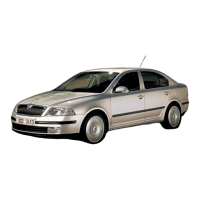
Do you have a question about the Skoda OCTAVIA - 05-2005 and is the answer not in the manual?
| Brand | Skoda |
|---|---|
| Model | OCTAVIA - 05-2005 |
| Category | Automobile |
| Language | English |
Lists the various documents included in the on-board literature for the vehicle.
Describes the purpose and content of the Owner's Manual for familiarization.
Includes the most important identification data of the vehicle.
Explains how the manual is divided into sections and chapters for information retrieval.
Describes the applicability of sections to different models and equipment, noting optional items.
Explains section structure including headings, brief information, illustrations, and work steps.
Explains the use of Warning, Caution, Environmental, and Normal notes in the text.
Provides a general view to familiarize users with instruments, gauges, and controls.
Identifies the main components of the instrument cluster shown in the figure.
Explains the red zone, gear shifting, and the function of the revolutions counter.
Explains the operation and temperature ranges of the coolant temperature gauge.
Explains the operation of the fuel gauge and the warning symbol for low fuel.
Explains the warning signal for excessive speeds and its validity.
Describes the trip counter and kilometer counter functions and how to switch between them.
Explains the indicators and display messages related to service intervals.
Introduces the multi-functional indicator and its information display capabilities.
Introduces the information display and its information about radio, phone, navigation, and gearbox.
Provides an overview of warning lights indicating functions or faults.
Describes the different types of keys supplied with the vehicle and the key ring.
Provides instructions for replacing the battery in the radio remote control key.
Explains how the electronic immobiliser prevents unauthorized operation.
Describes how to switch child safety locks on and off for rear doors.
Explains the function and operation of the central locking system.
Explains how to switch lights on and off, including side lights, low beam, and main beam.
Describes the automatic driving lamp control and its functions.
Explains how to switch fog lights on and off.
Describes how to switch the rear fog light on and its warning light.
Explains the function to switch lights on after leaving or approaching the vehicle.
Explains how to adjust the brightness of the instrument lighting.
Describes how to adapt headlight range to vehicle load and avoid dazzling oncoming traffic.
Explains how to switch the hazard warning light system on or off.
Describes how parking lights and headlight flasher are operated via the turn signal lever.
Explains how to switch interior lighting on and off, and door contact setting.
Explains operation of rear interior lighting and its principles.
Describes the warning light located in the door trim panel.
Explains the automatic lighting of the luggage compartment.
Explains the positioning and operation of entry lighting.
Describes how to switch the rear window heater on/off and its operation.
Explains how to pull out and swivel sun visors, and mentions vanity mirrors.
Details how to unroll, roll up, and remove the sun screen.
Explains the operation of windscreen wipers and wash using the wiper lever.
Provides instructions for putting wipers into service position and taking off blades.
Explains how to take off and attach rear window wiper blades.
Explains manual dimming and automatic dimming interior rear-view mirrors.
Explains automatic dimming of exterior mirrors and its connection to interior mirror.
Basic information on front seat adjustment for safety and comfort.
Explains how to adjust height and angle of head restraints for optimal protection.
Describes how to switch on and regulate front seat heating.
Explains how to fold rear seats forwards and back into position.
Provides guidelines for loading the luggage compartment for good handling.
Explains the location and use of lashing eyes for securing goods.
Shows examples of fixing nets for horizontal and vertical pockets.
Shows examples of fixing nets for pockets and luggage compartment division.
Describes folding double hooks for attaching small luggage items.
Explains how to fix the floor covering using loops or hooks.
Explains the design of the luggage net for lighter objects and warnings.
Describes using the luggage compartment cover and its removal.
Explains unrolling and rolling up the net partition behind front seats.
Details removing and installing the net partition housing.
Provides points to consider when transporting luggage on the roof.
Explains fitting attachment points for the roof rack.
Explains cup holders in the front centre console and note holder.
Explains front and rear ashtray operation and warnings.
Introduces cigarette lighter and power sockets and their usage.
Overview of available storage facilities in the vehicle.
Explains how to open the seat backrest for skis from passenger or luggage compartment.
Details loading and securing the through-loading bag.
Describes opening the side compartment and its contents (CD changer).
Explains removing and installing the rear stowage compartment.
Describes the location and use of clothes hooks.
Explains how the heating system delivers and warms air.
Explains how to open, close, and redirect air outlet vents.
Explains the Climatic system, its operation, and conditions for cooling.
Explains how recirculated air mode works and its warnings.
Explains the auxiliary heating system that heats or supplies fresh air independently of the engine.
Details how to adjust the steering wheel's height and forward/back position.
Explains the ignition lock positions for petrol and diesel engines.
Details the starter system for petrol engines and starting attempts.
Explains the glow plug system for diesel engines and starting procedures.
Describes how to switch off the engine and safety warnings.
Explains how to shift gears in a manual gearbox, including reverse gear engagement.
Explains how to apply and release the handbrake and its warning light.
Explains the function, sensors, range, and activation/deactivation of the rear parking aid.
Explains the parking aid's warning of obstacles and activation/deactivation.
Introduces the cruise control system for maintaining constant speed.
Explains how to store a desired speed and the conditions for cancellation.
Details how to increase or decrease the stored speed.
Explains how to temporarily switch off the cruise control.
Describes how to completely switch off the cruise control system.
Introduction to the electronically controlled 6-speed automatic gearbox.
Explains automatic shifting and Tiptronic mode.
Guides on starting off and the initial engagement of selector lever positions.
Explains the meaning of selector lever positions like P, R, N, D, S.
Introduction to the DSG automatic gearbox and its dual clutch system.
Explains automatic shifting and Tiptronic mode for DSG.
Guides on starting off and selector lever positions for DSG.
Explains selector lever positions for DSG, including warnings.
Explains how the gearbox selects economical or sporty driving programmes.
Explains how to manually shift gears using the Tiptronic mode.
Explains the emergency program for gearbox faults.
Explains operating the radio system using steering wheel buttons.
Introduces the universal telephone preinstallation with voice control.
Discusses installation of mobile phones and radio systems and operational considerations.
Explains loading, ejecting, and managing CDs in the changer.
Introduces passive safety measures that reduce injury risk in accidents.
Provides information on safe driving practices and vehicle checks before starting.
Explains the correct seated position for the driver for safe and relaxed driving.
Explains the importance and legal requirement of wearing seat belts.
General information on the airbag system, its components, and fault indications.
Explains how side airbags and head airbags enhance occupant protection in side collisions.
Explains how head airbags and side airbags offer enhanced occupant protection.
Explains how to switch airbags on and off, and fault indications.
Introduction to safely transporting children, emphasizing rear seat use.
Emphasizes keeping children away from side and head airbag deployment areas.
Classifies child safety seats into groups based on weight and age.
Describes optimal child seats for babies and warnings about front passenger seat use.
Recommends child safety seats for Group 2 children and warnings about front passenger seat use.
Recommends child safety seats (bolsters) for Group 3 children and warnings about front passenger seat use.
Guides on installing child seats using the ISOFIX system.
Introduces intelligent driving technologies that aid vehicle control.
General information on the ESP system and its integrated functions.
Explains the EDL's function in preventing individual wheel slip.
Explains the TCS function in preventing driven wheel spin during acceleration.
Discusses factors affecting braking efficiency, like wear and wet roads.
Explains the function of the brake booster.
Describes how Brake Assist increases braking force in emergencies.
Describes the system that assists starting on steep hills.
Describes the power steering system and its automatic adaptation.
Information on engine break-in procedures and general driving advice.
General advice on driving style for fuel economy and environmental consciousness.
Explains how early shifting saves fuel.
Explains the cost of idling and recommends switching off the engine.
Explains the high fuel consumption from short distances and recommends longer trips.
Emphasizes the importance of correct tyre inflation for fuel saving and handling.
Advises against transporting unnecessary weight and the impact of roof racks.
Explains that generating electricity costs fuel and recommends switching off components.
Suggests keeping a logbook to track fuel consumption and identify changes.
Details environmental protection measures in design, materials, and manufacture.
General advice for driving in other countries.
Advises caution when driving over rough roads or kerbstones to avoid damaging the vehicle.
Explains the importance of proper care for vehicle value and warranty claims.
Discusses washing the vehicle, frequency, and factors affecting paintwork.
Explains the benefits of wax treatment for paintwork protection.
Advises when polishing is necessary and the use of wax preservers.
Explains how to clean and polish chrome parts.
Advises on touching up paint damage and using Škoda dealer services.
Explains how to clean plastic parts and synthetic leather.
Advises on cleaning windows and avoiding stickers on the rear window.
Recommends inspecting and touching up the vehicle's protective underbody layer.
Explains the factory-applied wax protection for cavities.
Advises on cleaning the engine compartment, especially in winter.
Explains cleaning plastic parts, artificial leather, and cloth trims.
Advises on cleaning seat covers without making them wet.
Explains care for natural leather, including normal and severe soiling cleaning.
Information on petrol grades and catalytic converter compatibility.
Guides on opening and closing the fuel filler cap.
Explains winter-grade diesel fuel and its properties.
Explains the fuel filter prewarming system for diesel engines.
Identifies main inspection points in the engine compartment.
Explains engine oil specifications and recommendations for changing oil.
Guides on checking the engine oil level using the dipstick.
Guides on how to top up engine oil, including warnings and environmental considerations.
Explains the function of coolant and its specifications.
Guides on checking the coolant level in the expansion bottle.
Discusses coolant loss as an indication of a leak and actions to take.
Provides instructions for replenishing coolant, including warnings and environmental considerations.
Explains the radiator fan's sudden operation and safety warnings.
General information about the battery and working on it.
Provides instructions for charging the battery, including warnings.
Advises on replacing the battery with a new one of the same specifications.
Explains the function of the windscreen wiper and washer system.
General comments on wheels and tyres, including running in new tyres and checking for damage.
Explains the importance of tyre rotation direction and warnings.
Explains how to identify tyre wear and minimum tread depth.
Advises on changing wheels around for even tyre wear.
Explains the importance of matching wheel bolts and warnings about incorrect treatment.
Explains the benefits of winter tyres and speed restrictions.
Explains how and when to mount snow chains, including warnings and recommendations.
Introduction to breakdown assistance services.
Explains the placement of the first-aid box and warning triangle in the Octavia.
Explains the housing of the first-aid box and warning triangle in the estate car.
Explains the location and maintenance of the fire extinguisher.
Lists the contents of the vehicle tool kit and lifting jack storage.
Explains the purpose and contents of the tyre repair kit.
Explains the location and checking of the spare wheel.
Notes on driving with a temporary spare wheel and warnings.
Details the process of changing a wheel.
Explains how to remove and install full wheel trims.
Explains how to remove caps from wheel bolts.
Explains how to slacken and tighten wheel bolts.
Explains how to remove wheel trim caps.
Guides on jump-starting a vehicle using another car's battery.
Provides instructions and warnings for tow-starting and towing vehicles.
Explains how to install and remove the front towing eye.
Explains how to install and remove the rear towing eye.
Explains replacing fuses and their color coding.
Information on changing bulbs and when to seek professional help.
Details bulb types for front headlights (Halogen, Xenon).
Lists bulb types for Octavia light units.
Lists bulb types for estate car rear light units.
Lists bulb types for other lights like side turn signals, license plate, brake lights.
Guides on removing the headlight assembly for bulb replacement.
Explains removing the headlight and cover for parking light bulb replacement.
Explains removing and replacing the low beam headlight bulb.
Explains removing and replacing the main beam headlight bulb.
Guides on changing the front turn signal light bulb.
Explains changing light bulbs in the lamp holder for Octavia.
General technical data overview.
Explains vehicle data sticker and its location.

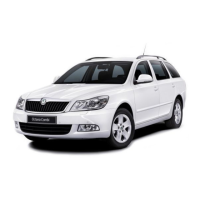
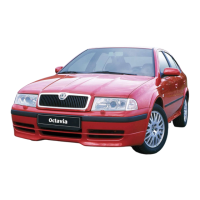
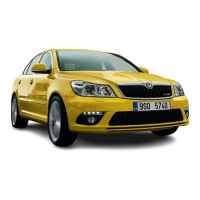
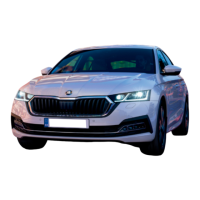
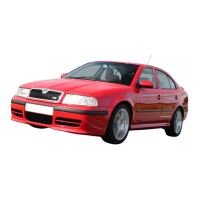
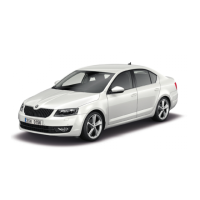

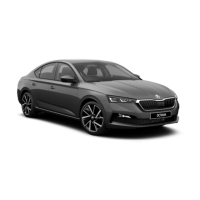
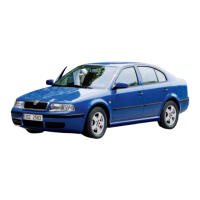

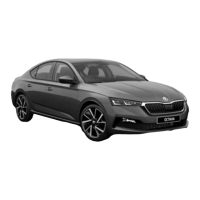
